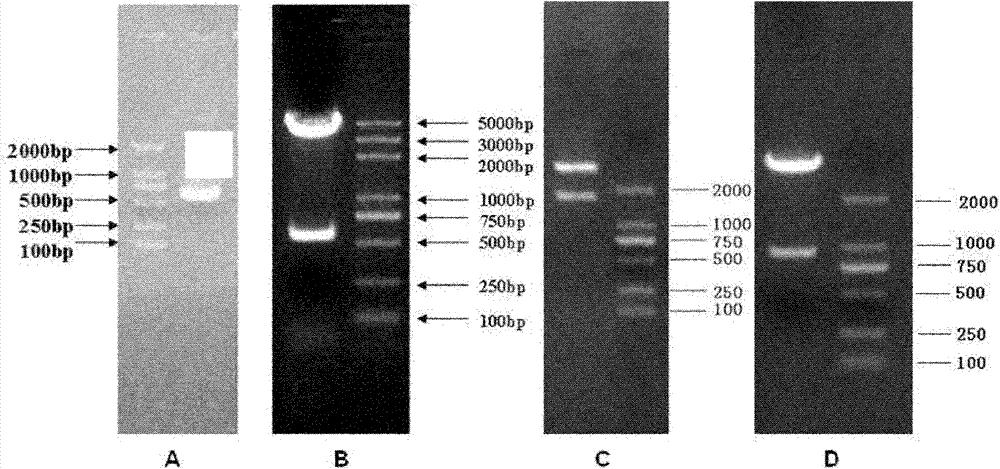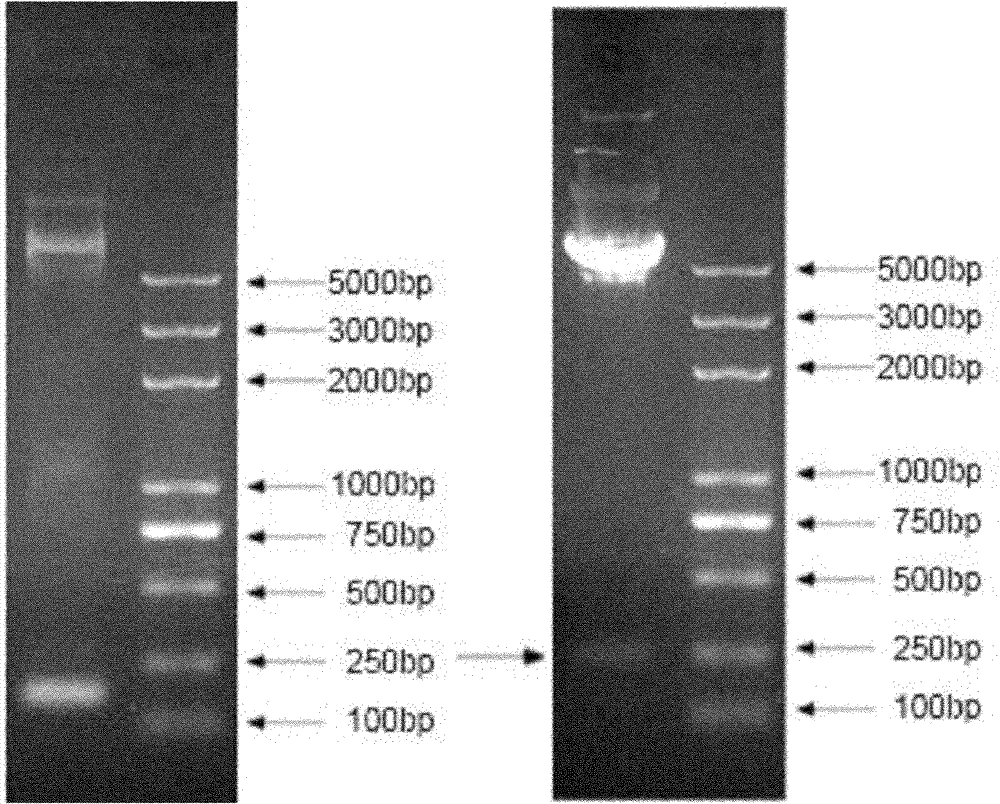Kit for identifying miRNA (micro-ribonucleic acid) target genes and applications thereof
A reporter gene, coding gene technology, applied in the field of genetic engineering, can solve problems such as cumbersome detection
- Summary
- Abstract
- Description
- Claims
- Application Information
AI Technical Summary
Problems solved by technology
Method used
Image
Examples
Embodiment 1
[0037] Embodiment 1, the construction of reporter gene carrier system
[0038] The cloning vector pMD18-T is the product of TAKARA Company, the vector pGL3-Basic, the internal reference vector pRL-TK vector and the dual reporter gene detection reagent are all products of Promega Company; Escherichia coli competent DH5α is produced by Beijing Biomed Biotechnology Company; The HepG2 line (purchased from the Basic Medical Cell Center of Peking Union Medical College) was preserved and provided by our laboratory; the miRNA extraction kit was miRNAeasy mini kit from QIAGEN Company, and the Reverse Transcriptase M-MLV (RNase H - ), primers were synthesized by Shanghai Bioengineering Co., Ltd.
[0039] 1. Construction and identification of experimental reporter vector pMIR-Luciferase
[0040] 1. Construction of pCMV-luciferase vector
[0041] ① Design CMV promoter primers as shown in Table 1, use pcDNA3.1+ (purchased from Invitrogen Company No. V790-20.) as a template, and use CMV p...
Embodiment 2
[0056] Embodiment 2, functional verification of the reporting system
[0057] 1. Construction of pMIR-CFHUTR vector:
[0058] ①Synthesize primers according to Table 1; extract RNA from HepG2 cells, reverse transcribe mRNA with oligo dT primers as templates, use CFH-3′UTR amplification upstream primers and CFH-3′UTR amplification downstream primers as primers, and perform PCR Amplified, and the obtained PCR product was sent for sequencing, and the result was that the PCR product had the nucleotide shown in sequence 4 in the sequence listing (the nucleotide in the 3'-UTR region of CFH). Electrophoretic detection such as figure 2 As shown in the left figure, a 247bp fragment was obtained, and the PCR product was connected to the pMD18T vector. After transformation, a transformant was obtained. The plasmid of the transformant was extracted and sent for sequencing. The result was that the plasmid was obtained by inserting sequence 4 in the sequence table into the pMD18T vector. ...
PUM
 Login to View More
Login to View More Abstract
Description
Claims
Application Information
 Login to View More
Login to View More - R&D
- Intellectual Property
- Life Sciences
- Materials
- Tech Scout
- Unparalleled Data Quality
- Higher Quality Content
- 60% Fewer Hallucinations
Browse by: Latest US Patents, China's latest patents, Technical Efficacy Thesaurus, Application Domain, Technology Topic, Popular Technical Reports.
© 2025 PatSnap. All rights reserved.Legal|Privacy policy|Modern Slavery Act Transparency Statement|Sitemap|About US| Contact US: help@patsnap.com



